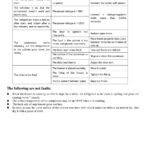Floor wax can be dangerous due to its flammability and potential to cause respiratory irritation. Exposure can lead to health issues.
Floor wax offers a polished and shiny floor surface. However, it can pose serious risks if not used properly. Flammable components in floor wax can ignite easily, leading to fire hazards. Additionally, inhaling the fumes can cause respiratory problems, headaches, and dizziness.
Users need to handle floor wax with care, ensuring proper ventilation during application. Always read the label for safety instructions. Using protective gear like masks and gloves can mitigate some risks. By following these precautions, you can enjoy the benefits of floor wax without compromising your safety.

Credit: floormechanics.com
Introduction To Floor Wax Hazards
Floor wax can make floors shiny. But it can also be dangerous. Many people don’t know the risks.
Understanding these hazards can help keep you safe. Let’s explore the dangers and clear up some common misconceptions.
Common Misconceptions
Many think floor wax is always safe. This is not true.
- Slip and Fall Risks: Wax can make floors slippery.
- Health Concerns: Some waxes have harmful chemicals.
- Fire Hazards: Certain waxes can catch fire.
Purpose Of Floor Wax
The main job of floor wax is to protect floors. It also adds shine.
Here are some benefits:
- Protection: Wax shields floors from damage.
- Shine: It gives a glossy look.
- Easy Cleaning: Waxed floors are easier to clean.
| Benefit | Description |
|---|---|
| Protection | Wax shields floors from damage. |
| Shine | Wax gives a glossy look. |
| Easy Cleaning | Waxed floors are easier to clean. |
Chemical Composition Concerns
Floor waxes can make your floors shine. But, the chemical composition can be dangerous. Some ingredients in floor waxes can harm your health. Knowing these ingredients helps you stay safe.
Toxic Ingredients
Many floor waxes contain toxic ingredients. These can cause serious health problems. Here are some common toxic ingredients found in floor wax:
- Formaldehyde: Can cause breathing problems and skin irritation.
- Phthalates: Linked to hormonal issues and developmental problems.
- Phenol: Can cause respiratory issues and skin burns.
Volatile Organic Compounds
Volatile Organic Compounds (VOCs) are common in floor waxes. VOCs can evaporate into the air and cause health issues. Some common VOCs in floor waxes include:
- Toluene: Can cause headaches and dizziness.
- Xylene: May lead to liver and kidney problems.
- Benzene: Known to cause cancer.
Exposure to VOCs can be harmful. Always use floor wax in a well-ventilated area. Consider using waxes with low or no VOCs.
| Ingredient | Health Risk |
|---|---|
| Formaldehyde | Breathing problems, skin irritation |
| Phthalates | Hormonal issues, developmental problems |
| Phenol | Respiratory issues, skin burns |
| Toluene | Headaches, dizziness |
| Xylene | Liver and kidney problems |
| Benzene | Cancer |
Health Risks To Humans
Floor wax can make floors shiny and clean. But it can also be harmful to humans. The chemicals in floor wax may cause health problems. This section will discuss the health risks to humans from floor wax.
Respiratory Issues
Many floor wax products contain volatile organic compounds (VOCs). These chemicals can easily become gases. When inhaled, they can irritate the lungs and throat.
- Coughing
- Shortness of breath
- Wheezing
People with asthma may have more severe reactions. Always use floor wax in a well-ventilated area to reduce risks.
Skin Irritations
Floor wax may also cause skin irritations. Some people may develop allergic reactions.
| Common Symptoms | Severity |
|---|---|
| Redness | Low to Moderate |
| Itching | Low to High |
| Swelling | Moderate to High |
To avoid skin problems, wear gloves when using floor wax. Wash your hands thoroughly after use.

Credit: www.amazon.com
Environmental Impact
Floor waxes can harm the environment. These products contain chemicals. Their effects extend beyond our homes.
Water Pollution
When floor wax gets washed away, it enters waterways. These chemicals can harm aquatic life. Fish and plants suffer due to these toxins.
Some harmful ingredients include:
- Phthalates
- Phenols
- Formaldehyde
These chemicals contaminate drinking water sources. They pose risks to humans and animals.
Air Quality
Floor wax releases volatile organic compounds (VOCs). These compounds pollute the air. Breathing them can cause health problems.
Common VOCs found in floor wax are:
- Benzene
- Toluene
- Xylene
Exposure to VOCs can lead to:
- Headaches
- Dizziness
- Respiratory issues
Indoor air pollution is a serious concern. Using safer alternatives can help protect our air quality.
Fire Hazards
Floor wax can be useful for making floors shiny and clean. But it can also be dangerous. One of the biggest dangers is fire. Let’s learn about the fire hazards of floor wax.
Flammability Risks
Many floor waxes are made with flammable materials. This means they can catch fire easily. When you use floor wax, it can spread thinly on the floor. This makes it even easier for the wax to catch fire. If there is a spark or flame nearby, it can start a fire quickly.
Here is a table that shows common flammable materials in floor wax:
| Material | Flammability Level |
|---|---|
| Alcohol | High |
| Petroleum Distillates | Very High |
| Solvents | Moderate |
Storage Precautions
Storing floor wax properly can reduce fire risks. Always keep floor wax in a cool, dry place. Do not store it near heat or flames. Make sure the lid is tightly closed to prevent leaks.
Here are some storage tips:
- Store in a metal cabinet
- Keep away from sunlight
- Check for leaks regularly
By following these tips, you can keep your home safer from fire. Remember, safety is always important when using flammable materials.
Slip And Fall Dangers
Floor wax can create slip and fall dangers in homes and workplaces. While it aims to protect floors and make them shine, improper use can lead to severe accidents. Let’s dive into some common risks associated with floor wax.
Improper Application
Improper application of floor wax can make floors extremely slippery. If the wax is not spread evenly, it can create patches that are more slippery than others. This inconsistency increases the risk of accidents.
Over-application is another problem. Applying too much wax can create a thick, slippery layer. This makes the floor dangerous to walk on, especially for children and pets.
| Application Mistake | Consequence |
|---|---|
| Uneven Spread | Creates slippery patches |
| Over-application | Thick, slippery layer |
Risk To Elderly
The elderly are especially at risk from slippery floors. Their balance and coordination are often not as strong. A fall can lead to severe injuries or even death.
To mitigate these risks, ensure floors are always dry and clean. Regular maintenance can help. Use non-slip mats in areas where falls are common, like bathrooms and kitchens.
- Keep floors dry
- Use non-slip mats
- Regular maintenance
Safe Alternatives
Many floor waxes contain harmful chemicals. These can be dangerous to your health and the environment. Safe alternatives are available. They protect your home and family. Let’s explore some options.
Eco-friendly Options
Eco-friendly floor waxes are made from natural ingredients. They do not harm the environment. Here are some eco-friendly options:
- Beeswax: A natural wax from bees. It is safe and effective.
- Carnauba Wax: Derived from palm leaves. It is biodegradable and non-toxic.
- Plant-Based Waxes: Made from various plants. They are renewable and safe.
Using eco-friendly waxes helps reduce pollution. It also supports sustainable practices. Choose these options for a greener home.
Non-toxic Choices
Non-toxic floor waxes do not contain harmful chemicals. They are safe for both humans and pets. Here are some non-toxic choices:
- Water-Based Waxes: These contain no harmful solvents. They are easy to apply and clean.
- Natural Oil Waxes: Made from natural oils like linseed or tung oil. They penetrate the wood and provide a durable finish.
- Biodegradable Waxes: These break down naturally. They leave no harmful residues.
Non-toxic waxes ensure a healthier indoor environment. They are perfect for homes with children or pets.
Proper Usage And Precautions
Using floor wax can make your floors shine and look new. But, it can also be dangerous if not used correctly. Knowing the proper usage and precautions can help keep you safe.
Application Tips
First, read the instructions on the wax container. Always follow these instructions. Clean the floor before applying wax. This helps the wax stick better.
Use a clean mop or cloth to apply the wax. Spread the wax evenly across the floor. Do not use too much wax. A thin layer is usually enough.
Let the wax dry completely before walking on it. Wet wax can be very slippery. This can cause falls and injuries.
Safety Gear
Wearing safety gear can protect you while using floor wax. Always wear gloves to protect your skin. Some waxes have chemicals that can cause skin irritation.
Wear a mask to avoid inhaling fumes. Some waxes have strong smells that can make you feel dizzy or sick.
Use safety goggles to protect your eyes. If wax gets into your eyes, it can cause irritation and damage.
Make sure the room is well-ventilated. Open windows and doors to let fresh air in. This helps to reduce the concentration of fumes in the air.
| Step | Action | Precaution |
|---|---|---|
| 1 | Read Instructions | Follow them carefully |
| 2 | Clean Floor | Remove all dirt |
| 3 | Apply Wax | Use a thin layer |
| 4 | Let Dry | Wait until fully dry |
| 5 | Wear Safety Gear | Gloves, mask, goggles |
| 6 | Ventilate Room | Open windows and doors |
Following these tips and precautions can make waxing your floor safer. Always be careful and use the right safety gear.

Credit: unisandirect.com
Frequently Asked Questions
Is Breathing Floor Wax Dangerous?
Breathing floor wax fumes can be harmful. It may cause headaches, dizziness, and respiratory issues. Use proper ventilation.
Is Floor Wax Harmful To Humans?
Floor wax can be harmful if inhaled or ingested. Use in well-ventilated areas and keep away from children.
What Are The Hazardous Properties Of Floor Wax?
Floor wax can be flammable and cause respiratory issues. It may contain harmful chemicals like VOCs. Skin and eye irritation can occur upon contact. Always use in a well-ventilated area.
What Are The Disadvantages Of Floor Wax?
Floor wax can make floors slippery, leading to falls. It requires frequent reapplication and can trap dirt. Some waxes emit strong fumes, causing health concerns.
What Chemicals In Floor Wax Are Dangerous?
Some floor waxes contain formaldehyde and toluene. These chemicals can cause respiratory issues and skin irritation.
Conclusion
Understanding the dangers of floor wax is crucial for safety. Some waxes can cause slips, respiratory issues, and skin irritation. Always choose non-toxic, eco-friendly options and follow application guidelines. Prioritizing safety helps protect your family and pets from potential hazards.
Make informed decisions to maintain a safe and clean home environment.




